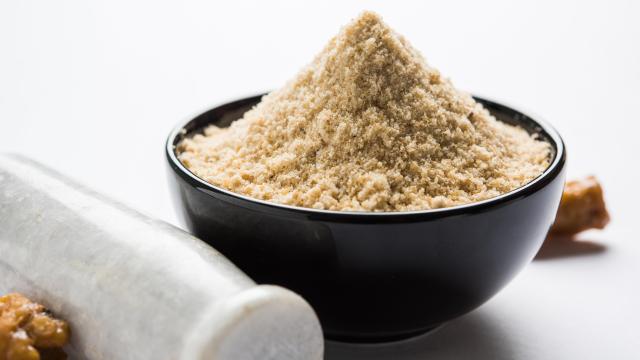When it comes to mouthwatering meals, sometimes the most pungent ingredients are the most essential. Where would Asian cuisine be without fermented fish sauce? Or German or Korean cuisine without various pickled cabbages? And we all know how cilantro can divide families. Standing alone, these ingredients can cause the unaccustomed to turn away, but when paired with complementary ingredients in a finished dish, even the pickiest of eaters wouldn’t sense their presence, just the harmony of flavours. Hing is no different, and once you become familiar with wielding this powerful powder, you’ll be crafting irresistible flavour combinations of your own.
Hing (also called asafoetida) is the dried and ground sap from the root of a species of mountain ferula native to Afghanistan and Iran. Although you might forget all of that, you’ll never forget the strong smell. It’s often used in tiny doses in Indian cuisine, but tiny doesn’t mean unimportant. Hing is one of the most distinct flavours I’ve ever tasted and is completely unique. It’s been difficult for me to pin-point a description or cite relatable flavours for hing-newcomers, but I’ll give it a shot. Hing tastes and smells as though garlic and onion were superheroes wearing capes of sulphur, and their super power was adding their aromatic souls to your meals. That helps, right? Other folks have described it in wholly negative terms, but I have a sneaking suspicion that they’re “yucking someone else’s yum.” It smells like what it is: dried, pulverised plant resin. I do agree that it is indeed powerful and quite a bit funky. But for those who can’t eat actual garlic or onion, hing can be a reliable substitute for those flavours. Most importantly, when added to dishes that include upwards of six different spices, it can unify everything and add in that je ne sais quoi.
Since hing is robust, and the pure stuff has a tackiness to it (no doubt a characteristic of it being resin), it’s typically sold with a rice or wheat starch cut into it to keep it loose and dry. When you purchase a jar, make sure you know if it includes any other starches, like this one from L.G Hing, or if it is more pure, like this one from Best Hing Ever. Read the ingredient list carefully to help you determine just how much to add to your meal. I have Best Hing Ever and the first time I used it, barely ⅛ teaspoon, it overpowered the other elements in my dish. Lesson learned. Now, I only had a pinch.
Hing pairs incredibly well in umami-packed dishes, with beans, and anywhere you could see yourself adding onions or garlic. If you’d like to start out with tried-and-true recipes, check out masoor dal, or rajma dal. Just a touch of hing is sprinkled in to draw out the musky, earthy flavours of the lentils, and the mellow flavours of the warm spices. If you’re already at the experimental stage, keep in mind the funky onion-garlic flavour profile, and explore from there. When I think of a hearty, comforting bowl of dal, my mind wanders to stews, chillis, or meaty casseroles. These could do with a touch of allium-accented hing to bring out their other savoury flavours.
Note that hing blends into dishes best when it has a chance to bloom during the cooking process. That usually comes in one of two ways: It’s toasted in hot fat along with other spices, or it’s sprinkled over a watery ingredient like chopped tomatoes or after water has been added to a stew. If you’re using a more pure hing, be sure to sprinkle it around. If you drop it all in a pile, the high temperature of hot oil might cause the resin granules to adhere into itself again, and it will become a little super-powered hing-puck instead of distributing throughout your dish. Like sharp vinegar is to cucumbers, or smoke to salmon–experiment a little with hing, and you’ll find that this pungent ingredient is exactly what you need to make your meals blossom.

Leave a Reply
You must be logged in to post a comment.